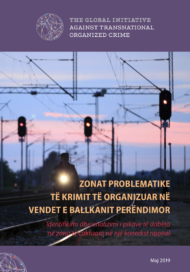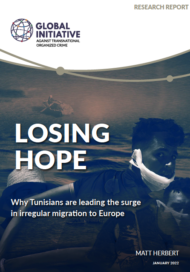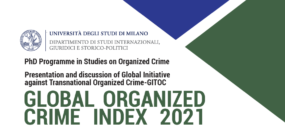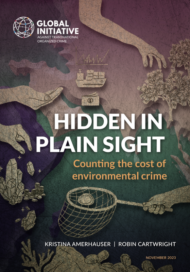Posted on 01 Apr 2020
At the end of November 2019, the Azeri customs authority made its largest-ever seizure of Afghan-sourced heroin. At 930 kilograms, it was also the largest single seizure of heroin to be made in the Black Sea region, excluding Turkey. The shipment, which had crossed the border from Iran, was destined for Western Europe via Azerbaijan, Georgia and Ukraine. Iranian and Azeri organized-crime networks were involved, and very possibly Turkish groups too, who dominate the Balkans route for Afghan opiates.
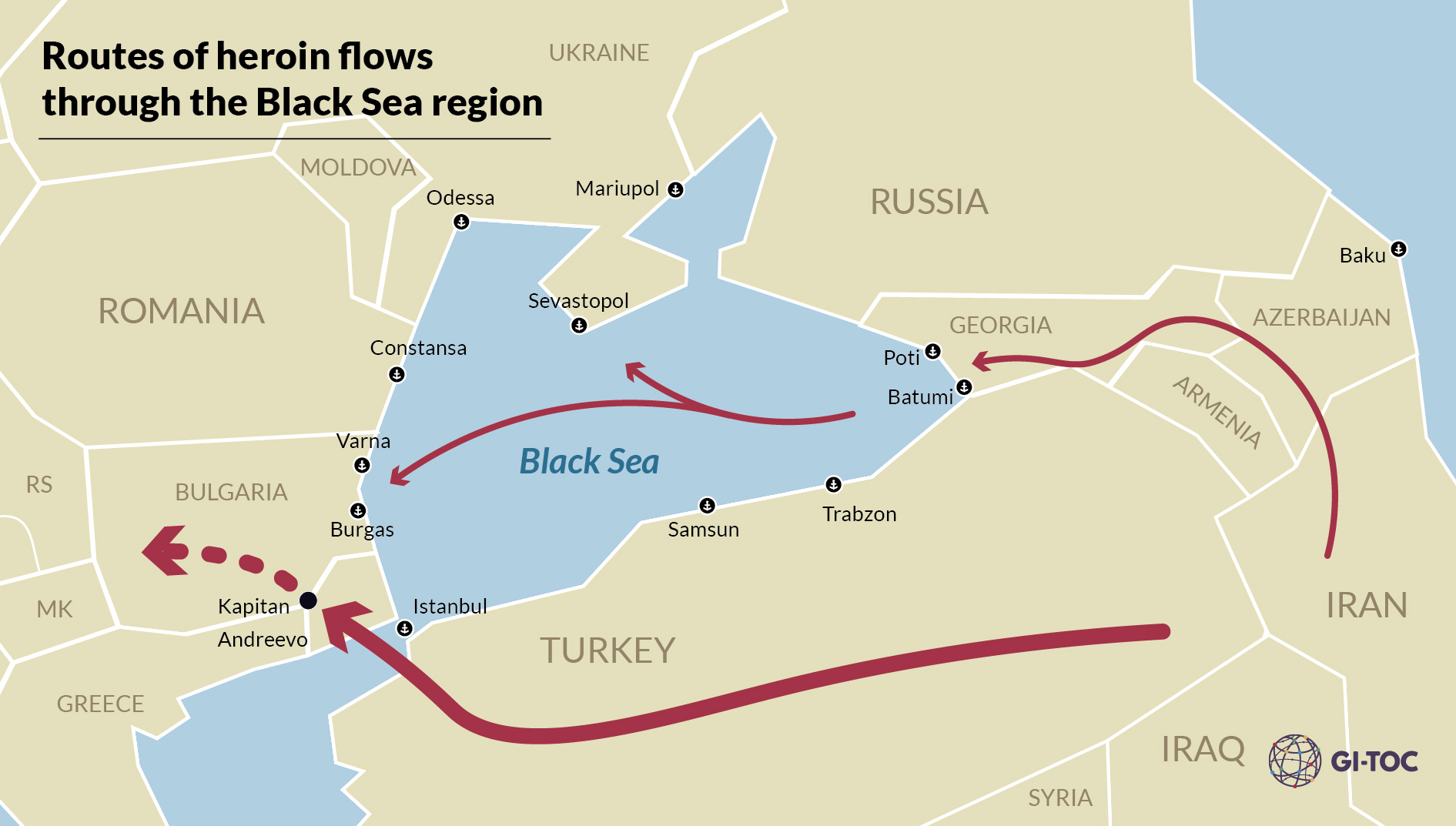
Such an
unusually large individual seizure could well suggest that the Caucasus and the
wider Black Sea region are playing a growing role as a route for heroin originating
from Afghanistan. Despite Western European law-enforcement claims
to the contrary, it seems that the Black Sea route is re-emerging as a prominent
corridor for processing heroin and shipping it to Western Europe and Russia.
In June and July
2019, Ukrainian customs made two of their largest seizures of Afghan-sourced
heroin – 600 kilograms and 330 kilograms, respectively. These shipments were
destined for Western Europe and Russia. Moreover, there has been an indication
that heroin production labs have been established in Georgia in the last few
years.
Nor is this regional
flow limited to just the westward trafficking of Afghan opiates; eastbound shipments
of acetic anhydride (AA), a precursor used in the production of heroin, have
also been noted. There used to be a considerable ‘reverse Balkan Route’ of AA
trafficking through the Balkans and Turkey to Afghanistan, but the
organized-crime groups involved were effectively shut down in 2007/8. Over the
last 10 to 15 years, Afghan and Iranian labs have primarily sourced
AA from China and India. However, Western European law-enforcement agencies have
noticed increasing levels of AA being shipped again from Europe to Afghanistan
and Iran. In 2018, Georgian customs seized AA shipments of 10 tonnes and 4.7
tonnes at the Black Sea port of Poti, Georgia, destined for Afghanistan. In the
same year, Romanian customs made a 5 tonne seizure of AA, a consignment that
was headed via Turkey to labs in Afghanistan.
Although the
Black Sea Caucasus region has been seeing a considerable uptick in trafficking
– and, in the case of Georgia, in heroin processing labs – how to interpret
this flurry requires some caution, as the traditional Balkan route trajectories
through Turkey have simultaneously seen increased seizures of drugs as well. For
example, in January 2019, the Turkish Jandarma, a military law-enforcement
unit, made their single largest seizure of Afghan heroin – a haul of more than 1.5
tonnes. And in the first nine months of 2019, Turkey seized
13 tonnes of heroin in total. Several high-level Turkish traffickers have been
arrested and provided information on the importance of the traditional Balkan
route for flows of Afghan opiates. Romanian and Bulgarian law enforcement
maintain that the primary focus for Afghan heroin is the border crossing point
between Bulgaria and Turkey at Kapitan Andreevo and Kapikule. Hence, it would
seem that the traditional Balkan route through Turkey is still the main concern
for regional law enforcement.
Despite the recent seizures, there is still much we don’t know about the scale of this regional illicit economy. Due to overproduction in Afghanistan and the collapse of the rial in Iran, more Afghan heroin is being produced than ever before. In 2018, although the estimated area under cultivation of opium poppy declined slightly, it was still the second highest recorded level of production since analyses began in the early 1990s. Such overproduction may see more heroin being produced and shipped, although the value upstream, in transit countries and destination markets could be lower, as the market for Afghan opiates in Western Europe is stable or in a slight decline. Competition will be intense to produce either cheaper heroin or product at higher purity and at the same price. Traffickers will have to warehouse more, find new markets or alter their business models.
Although it is clear the region is impacted by a variety of illicit commodity flows (e.g. heroin from Afghanistan, cocaine from South America and small arms produced in the region), the degree of diversification among organized-crime networks operating there remains uncertain. Seizures in the region, and in Azerbaijan in particular, have been few and far between. Cooperation between law-enforcement agencies in the region and with international partners is limited and faces considerable challenges both in terms of capacity and political priorities.
What could complicate the matter further for the Black Sea region is the recent military withdrawal agreement signed between the United States and the Taliban. With the impending withdrawal of NATO forces from the region and the Taliban already exerting extensive control over Afghanistan, even more Afghan heroin could begin flooding the Black Sea region.
Only time will tell if the region will experience a resurgence in illicit drug economies and transnational organized-crime groups. Meanwhile, the global restrictions on cross-border travel due to the coronavirus are also having a disruptive effect on criminal groups’ activities. The virus is changing the market supply-chain dynamics, from the source markets down to the street-level dealers, and cartels in the region are likely to feel the squeeze – as evidenced elsewhere, such as in Mexico. Further monitoring of the regional flows over time will be needed.
